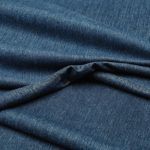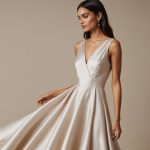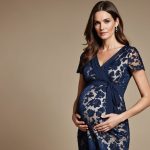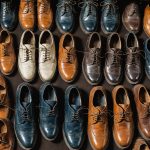Comprehensive Guide to Sustainable Fashion Blogging in the UK
Exploring the landscape of sustainable fashion blogging in the UK requires an understanding of both the importance of sustainability and the nuances of UK fashion trends. Sustainability in fashion isn’t just a trend; it reflects an urgent need to address environmental issues. By embracing eco-friendly tips, bloggers can lead the way in promoting change within the industry.
Eco-Friendly Materials and Brands
At the heart of sustainable fashion blogging is the spotlight on eco-friendly materials. Key materials include organic cotton, Tencel, and recycled polyester. These materials represent a shift toward environmental responsibility, reducing the industry’s carbon footprint. Highlighting brands using such materials can significantly influence consumer decisions.
Also to read : Discover the Revolution of Sustainable Fabrics Redefining Women’s Fashion Trends in the UK
Engaging Your Audience
To maintain a compelling blog, understanding audience engagement is crucial. Bloggers should weave eco-awareness into their narrative to foster a deeper connection with readers. Responding to the demand for authentic, value-based content, sustainable fashion bloggers can use storytelling to illuminate the journey of sustainable choices in fashion.
Creating content around sustainable innovations and engaging with followers through comments or brand collaborations empowers readers and encourages a community devoted to sustainability. Building such a community can reinforce the collective impact on fashion trends.
Have you seen this : Master the Art of Pairing Chunky Sneakers with Feminine Dresses for an Effortless Chic Look
Content Ideas for Sustainable Fashion Blogs
Designing a content strategy for sustainable fashion blogs can significantly amplify your message. By aligning your blog themes with fashion sustainability topics, you foster greater engagement and impact. Here’s how to effectively structure your content to resonate with your readers:
Create Seasonal Content: Highlight eco-fashion trends for each season. Discuss how to adapt wardrobes sustainably as the weather changes, focusing on items that are timeless yet eco-friendly.
Spotlight Sustainable Brands and Designers: Dedicate posts to uncovering and reviewing brands and designers prioritising sustainability. Emphasise their unique approaches and innovations in eco-fashion.
Share Personal Stories: Connect with your audience by narrating personal journeys toward making sustainable choices. Relatable experiences can inspire others to embark on similar paths.
Feature Fashion Sustainability Topics: Delve into current debates and innovations in the realm of sustainability. Address questions like, “How does the industry’s carbon footprint impact our environment?” Engage readers by providing clear, factual answers that educate and empower them to make informed decisions.
By creatively integrating these elements, your blog can serve as an authoritative resource in sustainable fashion, actively contributing to a more conscious fashion industry.
Techniques for Engaging Your Audience
Audience engagement is a crucial aspect of sustainable fashion blogging. Embracing social media platforms can significantly enhance your reach and interaction. By using social media strategies, bloggers can promote sustainable fashion content effectively. Platforms like Instagram and TikTok offer creative avenues to showcase eco-friendly fashion through visuals and short-form videos.
Interactive content, such as polls and challenges, fosters active participation from your audience. These elements invite your readers to share their thoughts and make them part of the conversation. Challenges could include styling sustainable outfits or incorporating eco-friendly tips into daily routines.
Building a community focused on sustainability is another powerful strategy. Collaborations with other bloggers or brands can introduce your audience to broader perspectives and practices within the sustainable fashion realm. These partnerships not only provide diverse content but also strengthen community ties due to shared values and missions.
By weaving audience interaction into their blogging practices, sustainable fashion bloggers can create a more engaging and impactful presence. Consistent engagement not only enhances blog visibility but also motivates readers to be proactive about their sustainable choices. Through these techniques, bloggers actively contribute to a growing movement toward environmentally-conscious fashion.
Measuring Environmental Impact in Blogging
Sustainable fashion blogging thrives on fostering environmental awareness while offering practical solutions. A crucial component of this is impact assessment, which enables bloggers to make and advocate for more sustainable choices.
An essential method is tracking the carbon footprint of fashion choices. Understanding the environmental costs of specific materials and processes can guide more eco-friendly decisions. Considerations might include the energy used in production or the resources required for transportation.
Furthermore, critically analyzing the sustainability of promoted brands enriches your content integrity. Researching a brand’s practices helps ensure their alignment with genuine sustainability values, such as ethical production and use of eco-friendly materials. This research advocates for transparency and helps educate consumers.
Educating readers is equally vital. Empower your audience to make eco-conscious decisions by providing clear, usable information. Discussing the impact of garment recycling or the benefits of slow fashion can inspire readers to make informed choices about their wardrobes.
Consider the following steps:
- Encourage readers to calculate the environmental impact of their fashion choices.
- Provide insights into sustainable alternatives.
- Suggest actionable strategies to reduce fashion waste.
By integrating these practices, bloggers can significantly influence both industry standards and consumer behaviours towards sustainability.
Step-by-Step Guide to Eyeshadow Application for Hooded Eyes
Mastering eyeshadow techniques for hooded eyes can transform your beauty routine. With a focus on blending and shade selection, this guide offers essential tips for flawless application. Begin with the right tools—a fluffy blending brush and precision applicators are crucial. These tools ensure smooth transitions and detail work.
Essential Tools and Products for Hooded Eye Makeup
Having the correct products is key. Opt for long-wear eyeshadow formulas to combat creasing often associated with hooded eyes. Neutral primers set a clean base, enhancing shadow vibrancy and longevity.
Step-by-Step Technique for Applying Eyeshadow on Hooded Eyes
Start by applying a transition shade slightly above the natural crease. This accentuates the eyes, creating an illusion of depth. Then, using darker shades, define the outer corners. Focus intensity on the outer V for a lifted appearance. Highlight the brow bone and inner corners with lighter shades for added brightness.
Importance of Blending and Choosing the Right Colors
Blending is imperative for avoiding harsh lines. Work in gentle, circular motions to merge colors seamlessly. Choose warm neutrals or soft metallics, which flatter hooded eyes, providing dimension without overwhelming. Concluding with a gel liner close to the lash line creates definition without reducing lid space, enhancing the eye’s natural allure.
Common Mistakes to Avoid with Hooded Eyeshadow
When perfecting eyeshadow techniques for hooded eyes, avoiding makeup pitfalls ensures a crisp and captivating look. A common oversight is applying too much product directly to the crease, leading to undesirable product buildup. Instead, place the primary shade slightly above the natural crease to prevent colour pooling and unflattering shadows.
Another beauty mistake involves neglecting to adjust techniques for different eye shapes. Hooded eyes benefit from extending shadows upward and outwards, creating an illusion of a larger eyelid area. To achieve this, use a light hand when applying darker colours at the outer corner and a clean blending brush to diffuse any harsh lines.
Eyeshadow tips also suggest steering clear of overly shimmery shades on the hooded area, as they can accentuate droopiness. Opt for matte or satin finishes that softly enhance dimension without drawing unwanted attention.
For a polished finish, pay attention to the brow bone. Highlighting this area with a subtle pop of shimmer can add brightness and elevate the overall eye look. Emphasizing these techniques aids in avoiding makeup missteps and can transform hooded eyes into focal points, showcasing natural allure and sophisticated styling.
Product Recommendations for Hooded Eyes
Selecting the right eyeshadow products is essential for those with hooded eyes. Different eye shapes require tailored products for optimal results. The ideal eyeshadow palettes offer a variety of shades that are versatile and highly pigmented. Look for options that provide a mix of matte and satin finishes, as they ensure a balanced application without drawing attention to unwanted areas. Particular emphasis should be placed on palettes designed for long-lasting wear.
When it comes to tools, precision applicators and fluffy blending brushes are indispensable. These tools aid in applying shadows smoothly and ensure seamless blending, which is crucial for creating depth and natural contours in hooded eyes. Precision brushes are especially useful for defining the outer corners and creating a lifted effect.
Additionally, some beauty brands have developed formulas specifically designed to hold up on hooded eyelids, reducing creasing and maintaining vibrancy throughout the day. It’s worthwhile to explore these dedicated lines, as well as recommendations from makeup experts, for more tailored solutions. Brands such as Urban Decay and MAC are renowned for their comprehensive collections that cater to such specific needs, ensuring a flawless makeup look that enhances natural allure.







